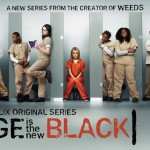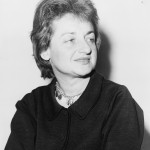The neighborhood where I grew up traditionally hosts its Fourth of July festivities on the Friday before the holiday. The theory, so I understand, is to be able to draw revelers from adjacent communities by avoiding competing with everyone else’s Independence Day events. I’m tempted to speculate that this profit-maximization logic makes this late June party more American than its July 4th counterparts.
Though the celebration is supported by local government, it’s actually hosted by a shopping center down the street from the house where I grew up and where my parents still live. Now, this isn’t one of Patrick Deneen’s “profane” big-box behemoths; it really is a relic from the 1950’s, largely populated by small, locally-owned shops and restaurants. Even so, the parking lot is a great plain of asphalt, and would induce retching in any decent New Urbanist.
The Friday-before-the-Fourth is the one day of the year during which that lot is filled to capacity—largely by tailgaters, but also by a few uninformed souls from nearby areas who stumbled into the party while on an errand for a haircut or a greeting card. Just about every road (on which parking is permitted) within a half mile of the shopping center is lined with cars.
The shopping center is shaped like a boomerang, with one outbuilding inside the far end. Inside the boomerang is the land of the tailgaters, with sporadic little tents and flags, looking like a soldiers’ encampment in Middle Earth. At the crux of the mall a stage-in-a-trailer is set up, mostly for entertainment such as local children’s dance groups. Along the mall itself it’s mostly sidewalk sales and little buffets set up by the restaurants—though this year, so we’re told, the center’s management company tried to charge a fee to set up outside, so almost all the food was inside.
That was this year’s most notable difference. Even though the event is essentially the same as when I was in diapers, every year some detail changes. Sometimes the change is just in the event, like the addition (then removal) of a challenging-games-for-chintzy-prizes section for the kids, and sometimes it is in the center itself, like this year’s debut of a frozen yogurt joint. Even as the vicissitudes of the market and of our culture change the storefronts and the music and the fashion choices of the revelers, a description of the 1984 edition of the party would be recognizable to a teenager in 2014.
A great deal of this consistency, I think, comes not from the organizers per se, but from the collection of family traditions that have been built around the pre-Independence Day festivities. (For instance, we always sit on the same spot on the same hillside at the Methodist church across the street from the shopping center, then we always discuss how we had to claim the spot—by placing and leaving blankets that morning—even earlier than last year.) These accumulate into a bulwark against market forces that might, in a vacuum, radically alter the event to adapt to external pressures. The party can’t change too much without exploding the combination of nostalgia and ritual that make it so appealing.
Growing up, “the fireworks” (as my family metonymically calls it) was one of the most anticipated days of the year—almost a summer Christmas. Looking back, I think a great deal of the appeal was (and remains) that, in our sleepy and nondescript suburb, we have something that is authentically and distinctly ours. Community rituals like these keep individuals and families anchored to a culture and market that is still in a meaningful sense local.
Events like this give hope to pessimists like myself who worry about (among a great many other things) the leveling of our culture by the twin forces of the market and the state. They remind us that families and communities can still, for now, declare at least a little bit of independence from the distant powers that seem to shape our world.












